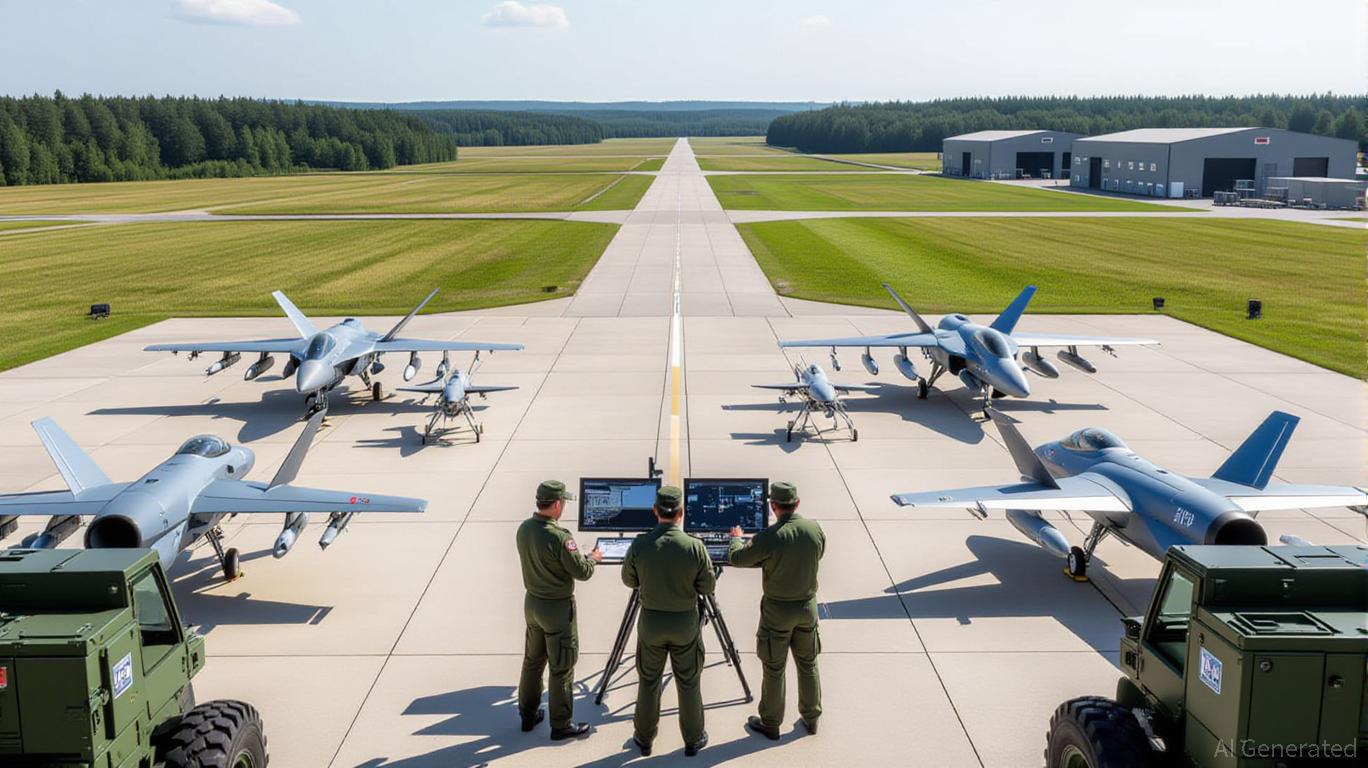As transatlantic tensions reshape global security dynamics, the European Union’s aggressive defense spending initiatives—anchored by the Readiness 2030 and ReArm Europe Plan—are unlocking a $1.2 trillion investment opportunity in defense, military technology, and infrastructure. With EU defense budgets projected to rise to 1.6% of GDP by 2026 and Ukraine’s war-driven industrialization creating a $35 billion defense sector, investors are uniquely positioned to capitalize on a structural shift in European security priorities.
The EU’s $800 Billion Defense Mobilization: A Catalyst for Growth
The EU’s Readiness 2030 framework, unveiled in March 2025, is a cornerstone of this transformation. By activating the Stability and Growth Pact’s national escape clause, member states can temporarily exceed fiscal limits to fund defense spending, creating €650 billion in fiscal space over four years. Coupled with the Security Action for Europe (SAFE) loan mechanism—raising €150 billion for missile defense, drones, and cybersecurity—this creates a fertile ground for defense contractors and tech firms.
Key beneficiaries include:
– Airbus Defense and Space: Leading air and missile defense systems, with EDF-funded projects like next-gen radar networks.
– Thales Group: Dominating cyber defense and AI-driven surveillance, supported by €65,000 seed grants for SMEs under the European Defense Innovation Scheme (EUDIS).
– Rheinmetall: Scaling artillery and missile production to meet NATO’s 5% GDP defense spending targets by 2035.

Ukraine’s War-Driven Industrialization: A Strategic Partner for European Defense
Ukraine’s defense sector has surged from $1 billion to $35 billion since 2022, driven by battlefield innovation in FPV drones, deep-strike systems, and electronic warfare. By December 2024, Ukraine produced 200,000 military drones monthly, a capability now being integrated into EU supply chains. The EU-Ukraine Technical Task Force, established in 2025, is streamlining procurement standards and joint production models, ensuring Ukrainian firms like Ukroboronprom and private startups align with EU defense priorities.
Investment opportunities here include:
– Joint ventures in drone optics and semiconductor manufacturing, where Ukraine’s assembly expertise pairs with EU R&D.
– Cybersecurity firms like B2C2 (UK-based but EU-aligned) and CrySyS Lab (Hungary) securing EU-Ukraine data infrastructure.
Military Mobility and Dual-Use Infrastructure: The Overlooked Frontier
The EU’s Military Mobility Package is prioritizing €70 billion in dual-use infrastructure upgrades, including reinforced railways, expanded airports, and cyber-secure transport networks. Firms like Nordex (wind energy with dual-use logistics expertise) and DB Schenker (rail logistics) are already securing contracts to modernize corridors across Germany, Poland, and the Nordic states.
Critical projects include:
– Railway tunnel reinforcements in the Netherlands-Germany-Poland corridor.
– Port terminal expansions in Greece and Bulgaria to handle military cargo.
– Cyber resilience upgrades for satellite communication systems, led by Leonardo and Safran.
Strategic Investment Thesis: Diversify Across Sectors and Geographies
- Defense Contractors: Prioritize firms with EU government contracts and EDF funding, such as Thales (AI/cyber) and Rheinmetall (artillery).
- Ukraine-Linked Tech Firms: Target startups in drone manufacturing and electronic warfare, supported by the European Defense Innovation Office (EDIO).
- Infrastructure Firms: Invest in companies upgrading transport and energy networks, like DB Schenker and Nordex, which benefit from the Connecting Europe Facility (CEF).
Risk Mitigation: Diversify across EU and Ukraine-linked assets to hedge against geopolitical volatility. For example, pair Airbus (EU-centric) with Ukroboronprom (Ukraine-focused) to balance regulatory and operational risks.
Conclusion: A New Era of European Strategic Autonomy
The EU’s defense spending surge and Ukraine’s industrialization are not temporary responses to conflict but long-term strategies to reduce reliance on U.S. military aid and build a self-sufficient defense ecosystem. For investors, this represents a rare convergence of geopolitical necessity, regulatory tailwinds, and technological innovation. By targeting firms at the intersection of EU-led security spending and Ukraine’s war-driven industrialization, investors can secure exposure to a sector poised for sustained growth through 2030 and beyond.
